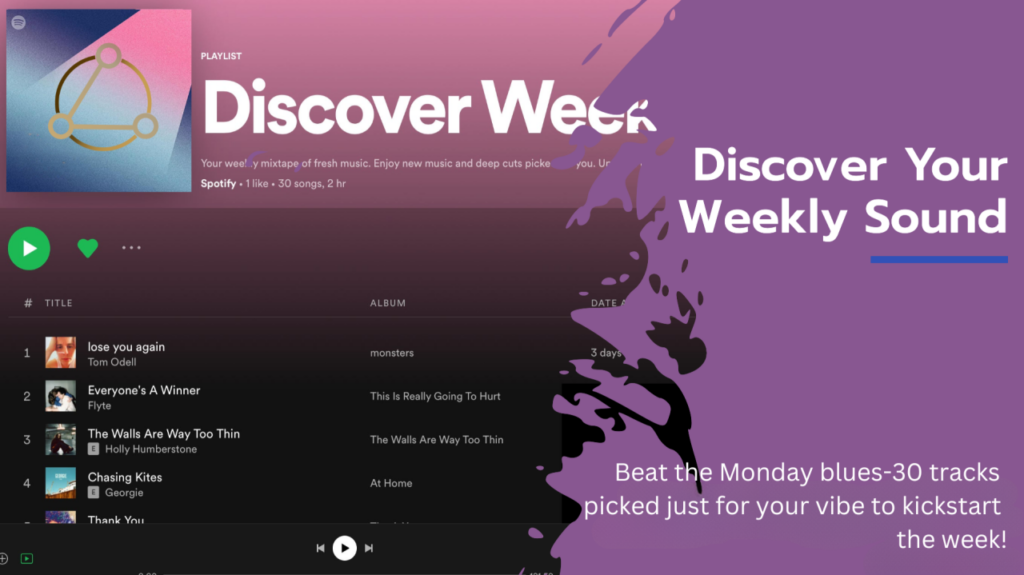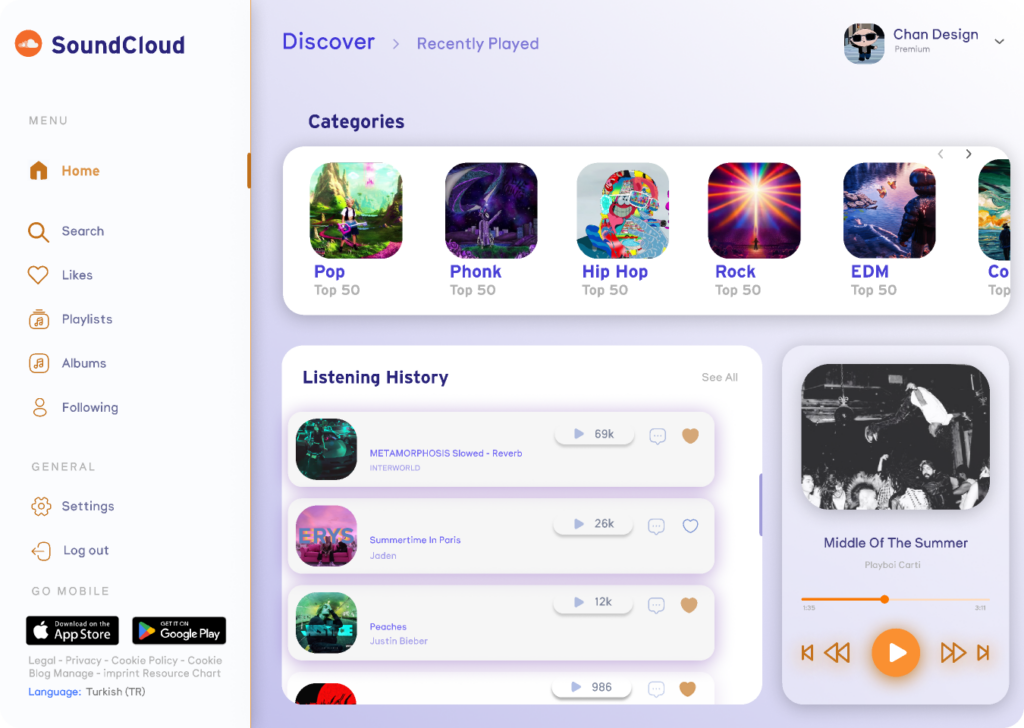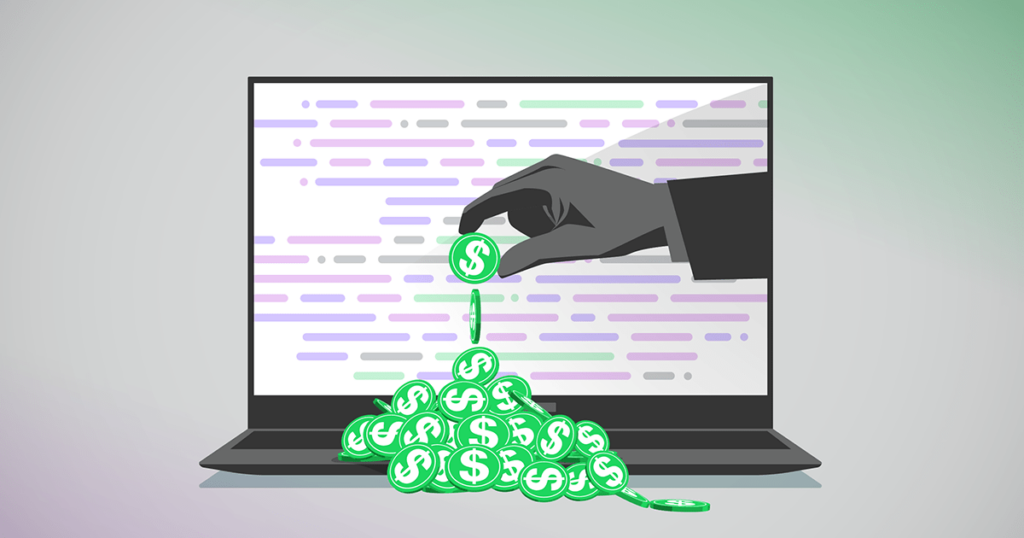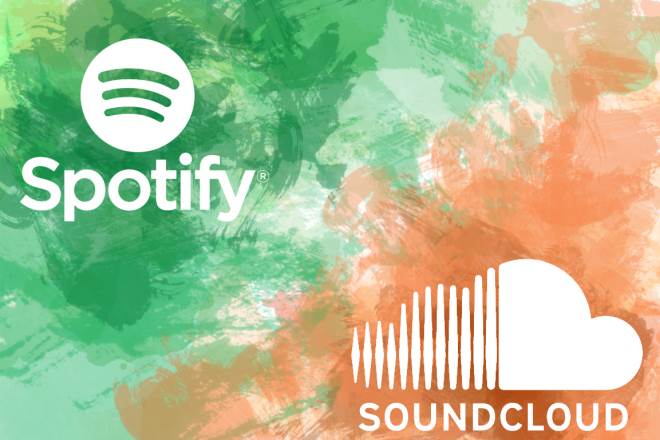Introduction
Whether you’re vibing to your favorite playlist on Spotify or discovering underground artists on SoundCloud, music streaming apps have become part of our daily lives. But have you ever wondered what’s happening behind the scenes every time you hit “Play”?
From audio streaming protocols to recommendation engines and backend architecture, these platforms are a complex blend of smart design, cloud infrastructure, and real-time data processing.
In this post, we’ll break down how music apps like Spotify and SoundCloud really work, in plain language – perfect for tech-curious fans, musicians, or developers.
Personalized Recommendations: How the App Knows What You’ll Like
Spotify: Data-Driven Playlists

Spotify’s famous for giving you music you didn’t know you needed. That’s thanks to:
- Collaborative Filtering: Analyzing your listening habits and comparing them with similar users
- Natural Language Processing (NLP): Scanning blogs, lyrics, and metadata for context
- Audio Analysis: Using neural networks to analyze waveforms and song characteristics
Behind the curtain, they use technologies like:
- Python, Scala, Apache Spark for data processing
- TensorFlow for machine learning models
These tools generate recommendations like Discover Weekly and Daily Mix.
SoundCloud: Social Discovery

SoundCloud leans more into creator-first discovery. Instead of pure algorithms, SoundCloud promotes:
- Trending tracks
- Likes and reposts from people you follow
- Curated playlists
Its backend uses:
- Ruby, Go, and Java for handling scale
- ElasticSearch to power real-time search and recommendations
Streaming Audio: How Music Gets to You in Real Time
When you press “play,” you’re not downloading the entire file – you’re streaming small pieces of it.

Chunked Streaming
Most apps use HTTP Live Streaming (HLS) or MPEG-DASH, which break songs into 5–10 second chunks. This helps with:
- Fast loading (buffering)
- Seamless playback
- Adaptive quality (based on internet speed)
Compression Formats
- Spotify uses Ogg Vorbis and AAC at multiple quality tiers (96kbps to 320kbps)
- SoundCloud uses MP3 and Opus
These formats balance file size and quality so music plays smoothly even on slow connections.
Backend Infrastructure: Handling Millions of Listens a Day

Spotify: Microservices at Scale
Spotify runs on a microservices architecture, meaning different parts of the app (playback, search, auth, etc.) are handled by separate services.
- Languages: Java, Python, Node.js
- Cloud: Hosted on Google Cloud Platform
- Streaming: Delivered via Content Delivery Networks (CDNs) like Akamai or CloudFront
Each song is split into multiple encrypted chunks and delivered in real time.
SoundCloud: Creator-Centric Pipeline
SoundCloud also supports user uploads, so its backend must:
- Accept various formats (WAV, AIFF, MP3)
- Transcode into streaming-ready files
- Handle copyright and moderation
They use Amazon Web Services (AWS), CDNs, and containerization tools like Docker to scale globally.
Licensing, Monetization & Rights Management

Behind every stream is a web of licensing and royalties.
- Spotify negotiates directly with labels, publishers, and rights organizations (like ASCAP, BMI)
- SoundCloud offers monetization via fan-powered royalties and partnerships with indie distributors
This means each stream triggers:
- Metadata lookups
- Royalty calculations
- User-specific entitlements (like offline playback or premium content)
Bonus: What Developers Can Learn

If you’re a dev looking to build a music app or just love knowing how stuff works, here’s what to take away:
| Lesson | Explanation |
|---|---|
| Start small | Bandcamp uses a monolith and thrives on focus. |
| Use CDNs | Speed matters. Audio chunks should be cached near the user. |
| Track behavior | Data drives discovery and personalization. |
| Optimize for mobile | A huge portion of streaming happens on phones. |
Conclusion
Music apps like Spotify and SoundCloud are more than just sleek interfaces – they’re powered by cutting-edge technology, real-time infrastructure, and smart data pipelines. Whether you’re a developer, musician, or fan, understanding the inner workings of these platforms helps you appreciate the magic behind every beat.




